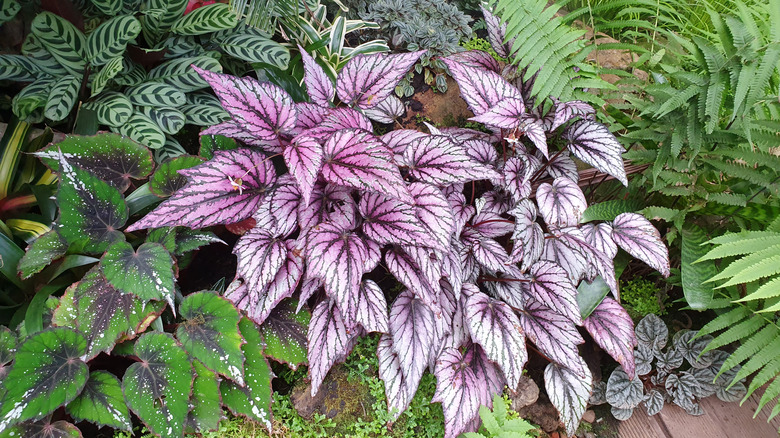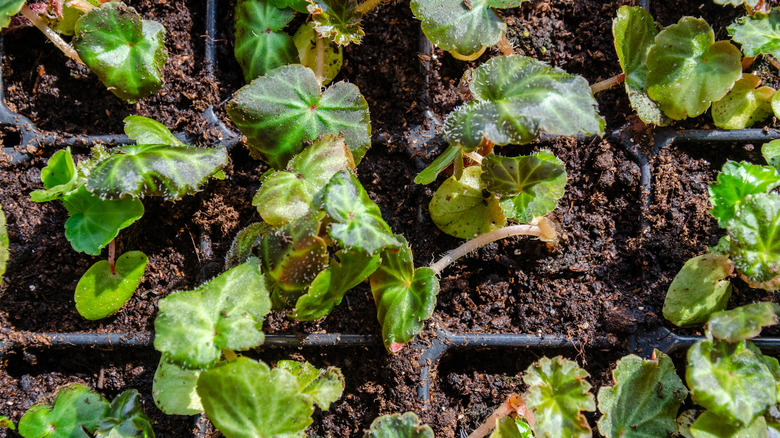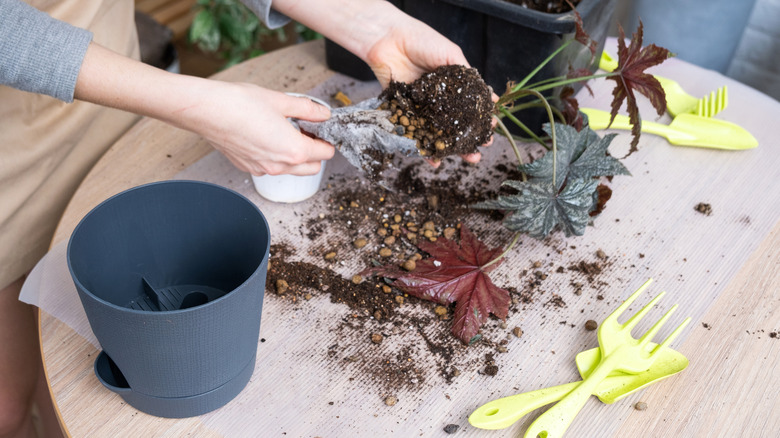Martha Stewart's Head Gardener's Tips For Propagating Your Begonias
You might have come across a recent video clip on Instagram by Martha Stewart's head gardener, Ryan McCallister, with some useful tips for propagating begonias (Begonia spp.) at home. It may surprise you to learn that you can keep your home smelling fresh with a year-round blooming indoor plant such as a tea rose begonias, so propagating more of these beauties has many benefits. You might even want to grow this easy-to-care-for plant in your bathroom and watch it thrive, which is another reason to multiply your collection.
McCallister's tips included the type of propagation mix to use and how to insert begonia leaves into the mix. He also stressed the importance of adequate drainage and that the soil should be consistently moist. Finally, he mentioned that it was not necessary to use rooting hormone but that you can use it if you wish. To ensure that McCallister's suggested tips will work for you, House Digest exclusively consulted Tiffany Selvey, our very own Garden Editor and in-house Master Gardener, who has a passion for begonias and grows many different varieties in her home, to get her take on these.
Why using the right type of soil is important
Ryan McCallister uses a tray to propagate his begonias and stresses that the soil should be sterile and well-draining while still being able to hold some moisture. House Digest spoke with Tiffany Selvey in an exclusive interview to get her expert advice on these tips. On using a tray to propagate begonias, she commented, "There are over 2,000 species of begonia, and some are easier to propagate than others. It's hard to tell exactly what kind of begonias leaves they are using in this video, but it looks like there are a few different types. This is an efficient way to get a lot of baby plants with very little effort."
When asked about the type of mix that McCallister recommended, Selvey replied by stating that "propagating plants in a greenhouse setting offers much more control over growing outdoors, so having sterile soil or using a soil-less mix can help prevent common issues. If there are no fungal spores or bacteria in the soil, they can't infect tender young plants. Well-draining soil is always important, but even more so for young plants developing roots. You don't want your propagated plants to start and end with root rot. That said, consistent moisture is also vital to keep tiny roots from drying out. A peat-based medium is perfect. It retains moisture without staying soggy."
Placing your cuttings correctly will avoid problems
In the Instagram clip, Ryan McCallister demonstrates that he only pushes the stems of the leaves into the mix and keeps the foliage slightly above the soil. When we spoke to Tiffany Selvey, this is another tip that she agreed with, saying, "This recommendation is likely to keep the leaves from rotting in moist soil before they have time to produce roots, so it makes sense."
Finally, McCallister mentioned that he doesn't use rooting hormone when propagating begonias because it's not really necessary. He said that these plants would root quite readily without it, but home gardeners could use it if they wish. Once again, Selvey agrees. She responded, "In my experience, begonias are some of the easiest plants to propagate. Rooting hormone might help, but I usually save that for more challenging propagations." If this has piqued your interest in trying your hand at propagating some of these plants at home and you live anywhere in USDA hardiness zones 9 through 11, you'll be interested to know that begonias are one of the numerous beautiful flowers that will grow perfectly in shade.


